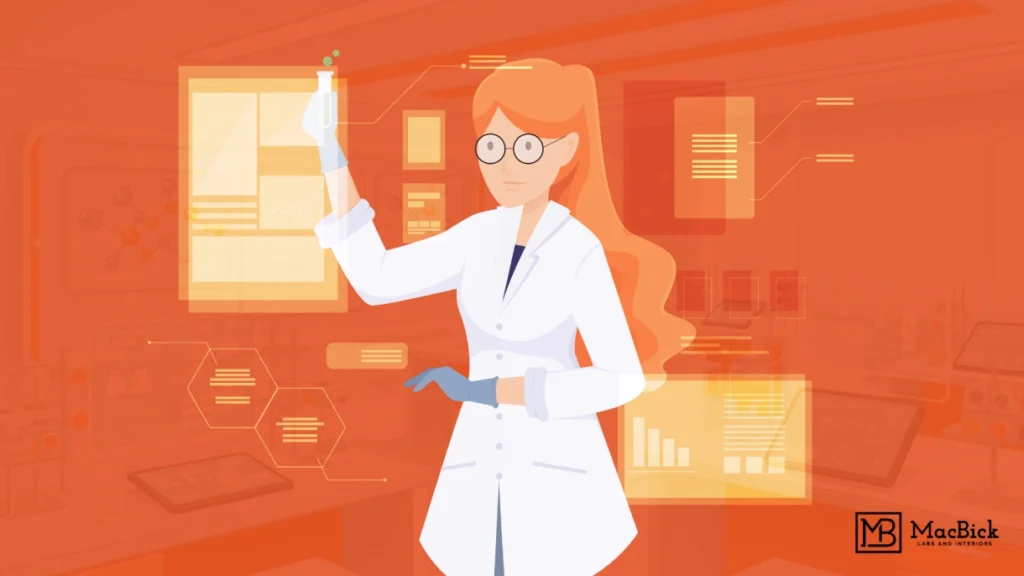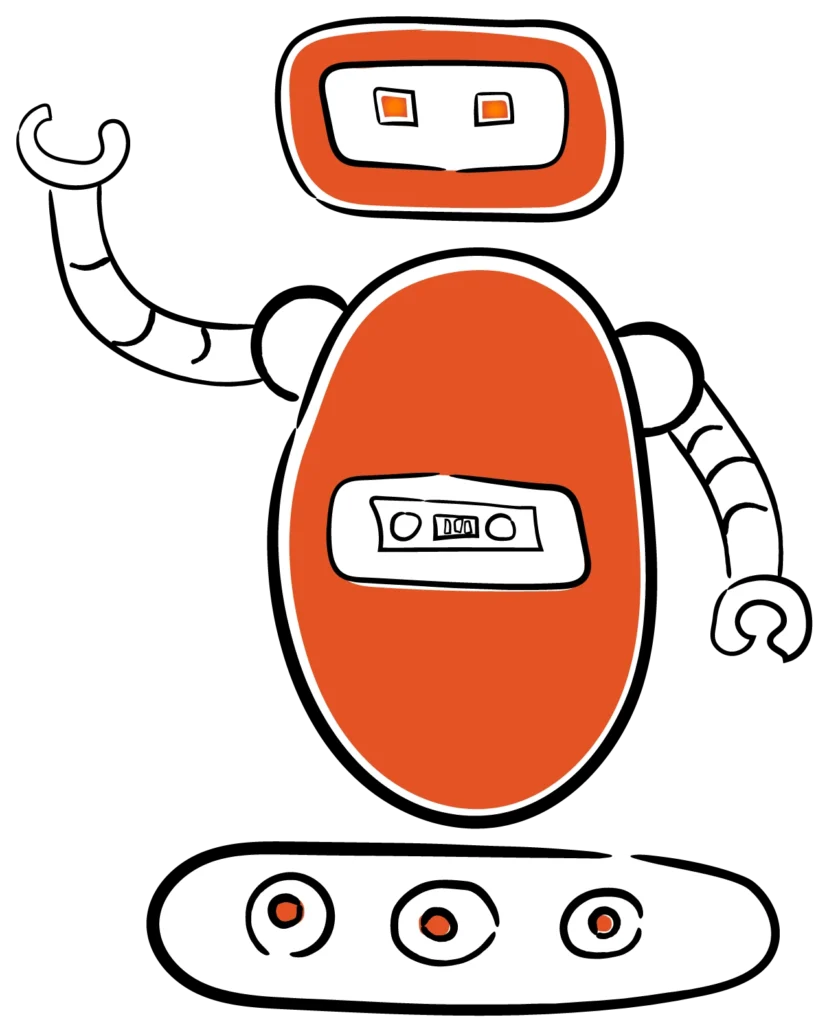70% of organizations are working on digital transformation strategies as technology continues to thrive. Every day, new technologies emerge, intensifying competition. Those who fail to adopt these advancements risk falling behind and miss opportunities for growth in a short period. Therefore, it is high time to incorporate technology into lab spaces for improved functionality and innovation.
In this blog, we’ll discover how integrating technology in design shapes the future of laboratories.
How does a Smart Lab Differ from a Traditional Lab?
There has been tremendous growth in the past few years as technology has boomed in all the major industrial sectors. Let us know how our smart labs are different from traditional labs:
Automation vs. Manual Processes
- Smart Lab: Uses highly advanced automation technologies for routine tasks such as sample preparation, data collection, and analysis, reducing the need for manpower.
- Traditional Lab: Relies heavily on manpower, which is time-consuming and prone to human error.
Connectivity And Integration
- Smart Lab: Equipment and systems are interconnected via the Internet of Things (IoT), allowing easy communication and integration across devices and platforms.
- Traditional Lab: Equipment operates independently with minimal connectivity, making data integration and communication between devices difficult.
Predictive Maintenance
- Smart Lab: It uses predictive maintenance technologies that keeps a continuous check on equipment health and predicts failures before they occur, thus minimising time periods of inactivity.
- Traditional Lab: Maintenance is typically performed after equipment fails or as per a fixed schedule, which can lead to unexpected downtimes and inefficiencies.
Now, let’s explore some advanced ideas for integrating technology into lab spaces:
IoT Enabled Equipments: Future Of Tech-Labs
In today’s hustle and bustle work environment, no one has the time to monitor performances and processes manually. However, sensors in equipment and IoT devices allow for real-time monitoring of all processes.
How Does It Actually Make The Lab Smart?
- Not only does it provide the ability to control and monitor equipment, but
- It uses predictive analytics to anticipate maintenance requirements and reduce downtime.
- Helps in automatic data collection and data cleaning for better analysis record-keeping.
- Ensures security, integrity, and confidentiality as it prevents unauthorized access to data.
Automated Workstations: Key To Quick Task Completion
Automation streamlines processes, saving time and boosting productivity by reducing manual labour. This leads to cost savings through error reduction and increased efficiency. Additionally, it enhances safety by minimizing exposure to hazards. Automated workstations enable continuous operation, higher throughput, and resource optimization, further enhancing productivity.
Few Types Of Automated Workstations :
1. Robotic Sample Preparation Workstations:
These unique workstations automatically measure, mix, and divide samples.
They’re used in different areas, like studying genes and proteins and finding new medicines.
2. High-Throughput Screening (HTS) Workstations:
These unique workstations make testing many different substances against living things easy.
They usually have robots that help with things like putting samples and chemicals in the right place for testing
3. Automated Imaging Workstations:
These stations do the job of taking and looking at pictures from microscopes or imaging machines by themselves.
They help do things quickly and easily, such as checking many samples, looking at pictures, and measuring data.
4. Integrated Automation Platforms:
Think of these platforms as superheroes combining many automated workstations and tools, making them work together like machines.
They help in complex lab work, like quickly screening lots of samples or doing many steps to create something new.
Smart Storage Solution: Revolutionising Lab Space
Making intelligent designs using technology makes it a beehive of activity. Implementing innovative inventory management streamlines the identification and tracking of the samples or items, ensuring researchers always have the materials they need without interruption.
Let’s See How It Can Help:
Implementing Smart Inventory Management
It streamlines the identification and tracking of the samples or items, ensuring researchers always have the necessary materials without interruption.
It uses RFID tags to provide real-time tracking and automated updates, significantly reducing the time and effort required for manual inventory checks.
Implementing Digital Modular Casework
It offers adaptive and storage solutions that can adapt to evolving research needs. With integrated digital tracking and monitoring, these systems enhance organization, improve workflow efficiency, and support a dynamic laboratory environment.
This technology reduces manual inventory tasks, minimizes errors, and allows researchers to focus more on their experiments and less on logistical concerns.
Integration Of AI & ML In Lab Spaces
Integrating AI and ML into lab spaces undoubtedly bolsters research processes and data analysis and improves efficiency. But how? Let me know in the following key points :
How Does It Help?
- Integrating AI and ML in data analysis helps refine large data sets and further assists in receiving required data.
- It also helps predict whether the equipment needs maintenance, thus preventing breakdowns.
- Assists in knowledge enhancement as AI assistants provide researchers with personalized support and information.
- AI-powered robots handle repetitive tasks like pipetting, sample preparation, data entry, testing, etc., which saves time and enhances precision.
Lab Wearables & Magic Of AR -VR Integration
Lab wearables, augmented reality(AR), and virtual reality(VR) tools are like the icing on the cake for future intelligent labs.
- Lab Wearables
Lab wearables make researchers’ movement easy and convenient, allowing hands-free access to information and data. Examples of lab wearables
- Smart glasses: Smart glasses with heads-up display real-time data or instructions to researchers without requiring them to look away from their work.
- Wearable sensors: These types of sensors monitor indispensable signs, environmental conditions, and chemical exposure, which enhance safety and data collection.
- Intelligent gloves: These gloves have sensors and touch response, which helps researchers handle lab tools and samples more accurately and feel the textures through touch.
- AR & VR Integration
VR and AR integration uses AI to create profoundly engaging virtual and augmented reality environments for advanced training and experimental simulations, which boosts learning and practice without real-world risks. Together, they ease lab workflows, improve safety, and open new research and collaboration possibilities.
Conclusion
No one would disagree if we agreed that if you want growth in lab spaces and any sector, technology must be its part and parcel. We need good food to stay healthy and technology to keep up with the competition. So, if you want your lab to do better, come talk to us at – https://macbick.com/


